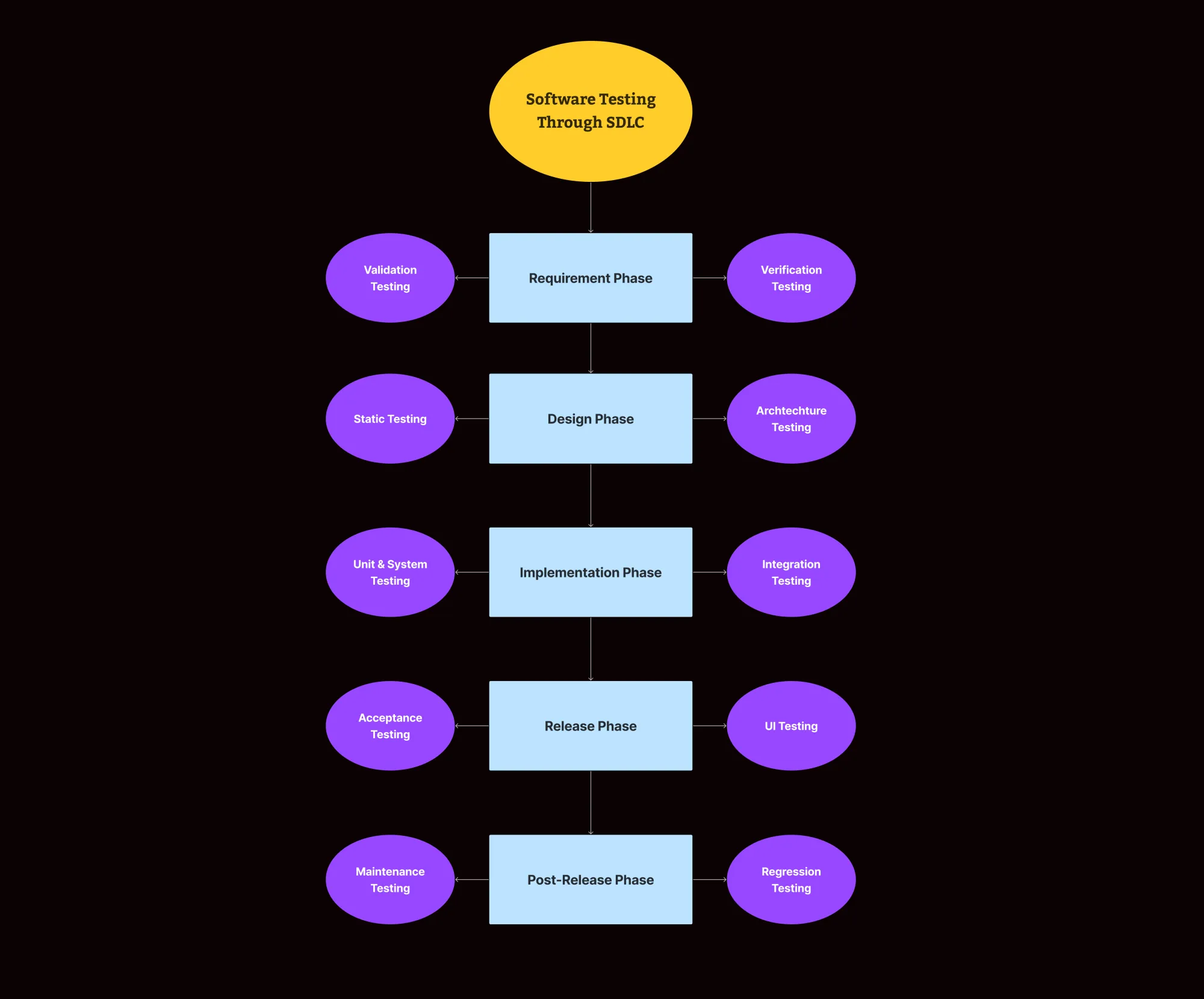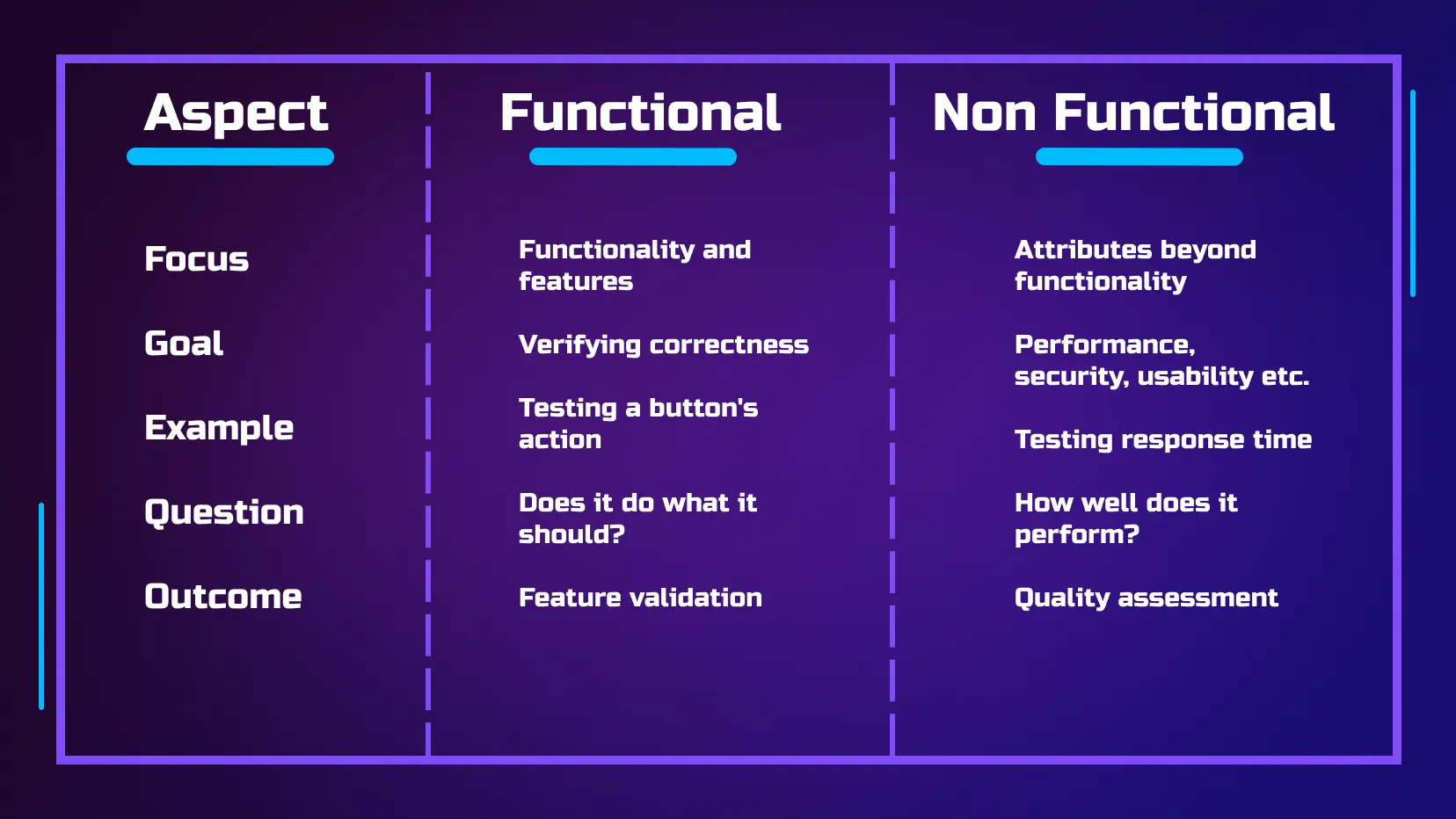Software Testing in 2023: The Ultimate Guide
Lack of software testing can negatively affect software functionality, reliability and user experience. Read about these testing techniques to avoid these problems.

Not long ago the world witnessed a tragedy where 5 people lost their lives in a fatal implosion when a submersible wasn’t able to withstand high underwater pressure. It later came to light that it wasn’t tested properly to work under such harsh conditions, No surprise! You already know where we are going with this.
Lack of testing can cause problems in real life as well as in the software world. On 8th August 2022, a major NHS data breach happened that left patient care records in chaos for months. It resulted in missing records, compromised the safety of documents, and missed medication doses.
On the other hand, often it can be geared toward user experience and expectations. In the present software world, there are tons of applications out there for people to choose from. They can just as easily switch to another provider, that is what makes UX and UI even more important. These are the factors that can set you apart from your competitors.
Last year, Tiktok witnesses a glitch that suddenly showed zero followers and kept blocking people out of their accounts, which caused massive frustration among users. People actively took it to social media and in no time this whole fiasco was trending on several sites. Although, it got resolved overnight something like this could be avoided with thorough software testing.
Let’s first discuss what is testing and why we need it.
What is software testing?
Software testing is a systematic process of rigorously evaluating a software product or system to identify bugs and errors before it is deployed. It involves a detailed series of scenarios and cases that are carried out to ensure that the software is working as intended and provides a high-quality user experience. Software testing includes testing software for functionality, performance, reliability, security, and compatibility with different environments. By uncovering and addressing flaws during the testing phase, software testing contributes to the creation of reliable, robust, and dependable software solutions. It ultimately helps you prevent any undesirable post-release problems and enhances user experience.
Why is software testing important?
After reading the above-mentioned examples, it’s hard to argue against the benefits of software testing. From taking a hit on your brand’s reputation to losing substantial amounts of money, the downsides of lack of insufficient testing are countless. But what are the objectives and advantages you ask? Let’s list some:
- Early bug detection: Testing is done for the purpose of digging out any defects and anomalies. They help developers find and rectify errors in the software at a pre-release stage.
- High-quality software: It is a direct consequence of the above-mentioned point. You are left with better-functioning software after going through the process of testing and correcting bugs.
- Reduced development costs: It costs more to fix bugs after the software has been released. Figuring out problems early reduces rework and all the related expenses as well.
- Risk mitigation: Thorough testing means you encounter nearly all possible risks before your software is available to users. It helps avoid system failures and security breaches later on.
- Happy users: With ever-increasing digitization and worthy competitors, user experience can be the make or break point for your product. An error-free and tested software means there are no unpleasant surprises for the end users. It leads to customer satisfaction, loyalty, and positive feedback.
- Compliance with industry standards: Testing ensures that software adheres to industry standards, regulations, and compliance requirements, avoiding legal and regulatory issues.
Role of Testing in Software Development Lifecycle(SDLC)
In SDLC the role of testing is pivotal as it ensures the creation of a dependable and high-quality software product. It begins even before the actual development process starts by validating requirements and designs to find any discrepancies there.
The next step where testing comes into action is at the developmental stage where unit testing is done to check the functionality of each individual component. As these components integrate, testing shifts to assessing their interactions in the integration phase. At the final stage of development, system testing evaluates the entire software for functionality, performance, and adherence to requirements. Throughout SDLC, testing ensures software stability, security, and optimal performance. It also supports cross-team collaboration between developers and quality assurance engineers to deliver a product that meets user expectations.

Common Testing Myths and Misconceptions
There are several misconceptions surrounding the process of testing which often result in misaligned expectations. These misconceptions can hinder the effectiveness of testing efforts and impact the overall quality of software products. Here are the five most common inaccurate assumptions about testing and why they are wrong:
1- Testing is expensive and time-consuming.
While there is no doubt, software testing requires resources and a workforce, it is substantially cheaper to fix problems pre-release. Investing in testing pays off in the long term for the company.
2- Testing is only about bug detection.
While finding bugs is a part of the testing process, there is more to it. It also validates requirements, enhances user experience, and improves software quality software.
3- Testing is the sole responsibility of the software tester.
Testing and quality assurance is a collaborative process. Designers, developers, and stakeholders play a crucial role in the testing process. Moreover, each individual developer is responsible for testing their own code before they pass it on for review or testing.
4- Automated testing replaces manual testing altogether.
Although in several cases automated testing is the right solution, it is not a replacement for human intuition and exploratory testing. Automation can save you many working hours but you need to manually set up the scripts and do regular maintenance. On top of that, you first need to manually test things atleast once before deciding what to automate.
5- More testing means perfect software.
Exhaustive testing is not a feasible approach. There are factors to consider like resource usage and time allocation. You can instead try to test the suspected points of failure. A balanced approach targets critical areas, balancing risk and resources for effective results.
Different types of software tests
There are several different approaches and methods for testing. Depending on the specific goals and objectives different kinds of software tests can be carried out. Let’s discuss categories and types of testing.
Functional
Functional tests focus on verifying the features and functions of a software application are working as expected and are in conformance with the predetermined requirements. This testing approach examines the software's external behavior and how it interacts with users, inputs, and the environment. Here are some of the common functional tests.
- Unit testing: This testing approach is used to test each individual part of the software before integration. It is done while developers are writing and building the code. Unit tests help build a sound foundation for more complex and integrated features of the software.
- Integration testing: This is the second step where several individual modules are tested to check if they work smoothly when integrated together. Integration tests detect any compatibility or communication issues that might not surface during individual testing. For example, microservices are a big part of modern development infrastructure. It is important to test if all these services communicate with each other properly.
- Smoke testing: Build verification or smoke testing is carried out whenever a new build is made. They help you decide whether more time-consuming and expensive tests should be done or not by checking the stability of the build. Smoke tests help catch issues early in the development cycle and prevent wasting time on further testing if the build is fundamentally flawed.
- System testing: As the name reflects this involves testing the whole software as a complete and integrated system. It is used to validate the software's functionality, performance, and alignment with user expectations before it's released.
- Boundry testing: It is a software testing technique that evaluates how the software behaves under load and extreme conditions. It involves testing the minimum and maximum values, as well as values just below and above these boundaries. Boundary testing helps identify boundary-related defects and issues related to data validation and handling.
You can read about how at Codesphere this year we ran high stress tests and ensured smooth performance through mulriserver hosting for one of our clients.
- User acceptance testing: UAT or pre-production testing is the last phase of the testing process. These are formal manual tests run to determine the compatibility of the software with business requirements as well as to check if it is ready for delivery. The primary goal is to validate that the software aligns with user expectations, functions correctly in the user's environment, and delivers the intended value.
In agile and DevOps these tests are used in functional testing approaches like Acceptance Test-Driven Development (ATDD), Behavior-Driven Development (BDD), and Exploratory Testing.
Non-functional
This type focuses on testing user interface aspects like performance, security, usability, compatibility, and reliability. The goal is to ensure the software's overall quality, enhance user satisfaction, and minimize risks associated with performance, security, and other critical aspects. Let’s introduce us to some of the basic non-functional software tests:
- Performance Testing: It is focused on ensuring the developed software performs accurately or as expected under certain workloads. Performance testing evaluates the speed, throughput, resource utilization, etc to identify bottlenecks and performance issues.
- Security Testing: It is done to fish out vulnerabilities and weaknesses in a software application's design and implementation. Security testing helps prevent unauthorized access and data breaches by simulating real-world attack scenarios and employing techniques like penetration testing and vulnerability assessment.These tests are are part of every serious vetting process, if you want serious clients to use your software, you should have a standard security testing protocol inplace.
- Usability Testing: These tests are designed to evaluate how user-friendly and intuitive a software application is. Usability tests help identify design problems, uncover improvement opportunities, and study user behavior and preferences. The goal is to amplify user satisfaction, engagement and boost the success of the software.
- Compatibility Testing: Compatibility testing checks how well a software application functions across different platforms, browsers, devices, and operating systems. By simulating various configurations and setups, compatibility testing identifies issues related to rendering, functionality, and user experience discrepancies.
- Scalability Testing: This testing process assesses the ability of an application to scale down or scale up in response to varying users and workloads without affecting user experience. Scalability testing identifies bottlenecks, limitations, and potential performance degradation that could arise as the software scales. Hence, it empowers you to design software that can keep up with future demands and growth.

Maintenance
This testing comes into play after a software application has been deployed and is in active use. The aim of maintenance testing is to validate if the implemented changes sit well with the existing system. This part of testing is crucial to maintain the integrity of your software in the long run.
- Regression testing: It is basically retesting of a software application. It is done to make sure that any new releases do not negatively impact the features that were working perfectly before. It involves rerunning previously executed test cases to verify that the changes have not caused a regression (unwanted disruptions).
Different Approaches to software testing
Software testing can be further divided into different categories based on the mode and approach of testing.
White Box vs Black Box Testing
White box or clear box testing is a testing approach that examines the internal logic, code, and structure of a software program. These tests are designed by software testers with a thorough understanding of the code, and the architecture of the software to identify coding errors, ensure complete code coverage, and validate the accuracy of algorithms and calculations. The goal of these software tests is to determine if the code is functioning correctly, adhering to design specifications, and covering all probable execution paths.
On the other hand, black box testing focuses on the user-facing testing of the software, which does not require an understanding of the software code or architecture. In this approach, test cases are designed to imitate real-world scenarios. This testing approach is done to monitor if the software meets functional requirements, behaves as expected, and delivers the intended outcomes to users.
Manual vs Automated Testing
These are basically the two most basic categories when it comes to software testing. Manual testing requires humans to execute test cases manually, to stimulate user interaction and scenarios. It is effective for exploratory testing, usability testing, and scenarios requiring human intuition.
On the other hand, automated testing utilizes scripts and testing tools. It is highly efficient for repetitive, time-consuming tasks as well as for regression testing, and large-scale test suites. It requires ongoing maintenance and initial setup. Both these approaches have their upsides and downsides. Human testing is great for adaptability, and for the sense of design sometimes whereas automated testing offers speed, precision, and repetition. The choice between them depends on the project's requirements, timeline, resources, and the balance between human insight and machine precision.
How Can You Automate Software Testing?
At this point, we can all agree that test automation is here to stay. So, how to automate your testing process? Test automation is a testing process that streamlines the testing process through specialized tools and scripts.
You can start by first choosing the tools that align with your application's technology stack and testing requirements. Then you can identify the test cases that are repetitive and time-consuming. Then you can create test scripts and set up an environment that includes necessary configurations, test data, and dependencies. In test automation, you would also need stubs, mocks, fakes, and appropriate test data to control the testing environment, validate outcomes and execute tests efficiently.
The next steps involve parametrizing software tests for data-driven testing and integrating automated tests into your CI/CD pipeline for seamless execution upon code commits. Moreover, it is important to set detailed reporting mechanisms to analyze test results. After that, you will need to regularly update and maintain test scripts to accommodate any changes in the application. This test automation approach tends to optimize your testing process for maximum efficiency, coverage, and consistency.
How We Automate Testing Internally At Codesphere
At Codesphere, we heavily advocate and rely on automating the development and testing process for our users as well as for our internal processes. The concept behind our platform is to provide developers with a streamlined development environment and encourage them to make frequent commits. However, that means more frequent testing as well. We also believe the current technology is no substitute for human intuition and insights. So, we take an approach where we use a mix of both manual and automated testing.
For every commit in Git, our automated unit tests are carried out. Although, few optimizations have been put in place to make sure these tests run only when they are actually needed to save on time and resources. The automated testing takes place as soon as the commits are made. Other than that, we extensively use and provide our users a manual testing environment with a preview deployment to do manual tests (e.g user acceptance testing).
Our three testing teams are also the ones that are developing the code and take rotations weekly to remove any bias towards the features developed by their own team. It also fosters an environment of close collaboration and transparency. One developer monitors our CI pipeline and we scrutinize and check our tests and see if we have any flaky tests. Deflakers are checked every day. The strategy is to automate as much as we can to save time that someone has to work on it all without compromising on the integrity of our software.
Wrap-up
Software testing ensures robust, functional, and excellent quality software which increases user satisfaction and boosts brand loyalty and reputation. The dire consequences of negligence when it comes to software testing are evident throughout the recent and far history of software. Collaborative efforts among designers, developers, stakeholders, and software testers can help navigate through misconceptions, align goals, set realistic expectations, and help achieve desired goals. When it comes to the best testing methods highly depend on your individual goals and software product. However, it is always great to have a balanced blend of manual and automated testing, recognizing the value of human intuition and technological precision.

